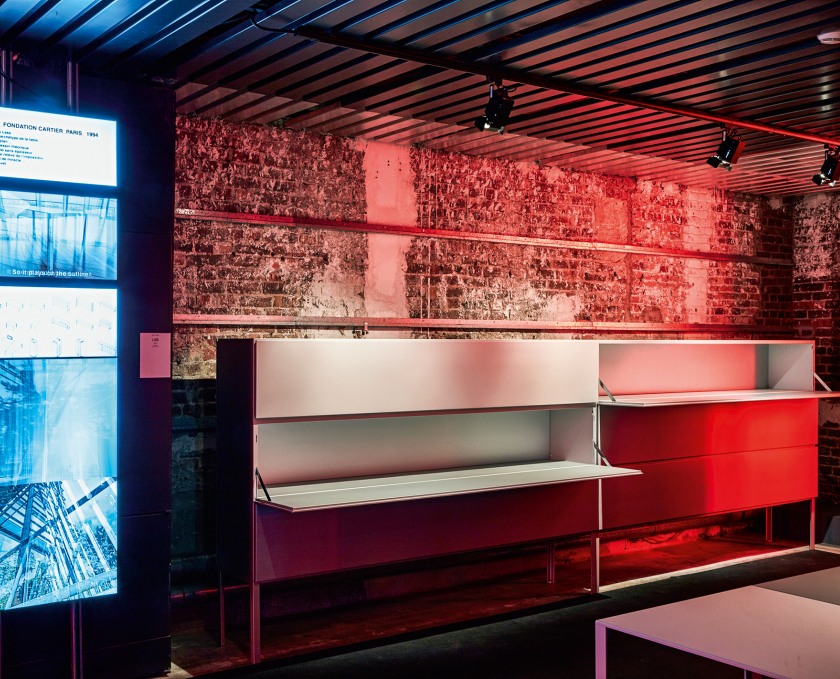The staging, curated by Jean Nouvel himself, is a treasure hunt, winding through the rooms, capturing fragments of space and transforming the perception of the place with warm colours, such as gold, orange and red, to enhance the furnishings of yesteryear and today. Boom, a thumping heart! The exhibition opens with a huge room illuminated in red, devoted to Less in all its forms. Interviews, videos and images illustrate how it came into being. Proceeding through, you find all the other furniture designed by Jean Nouvel for the Molteni Group – Molteni&C, UniFor and Dada. A partnership of over twenty years, set up to produce Nouvel’s designs for the Fondation Cartier (1994) – the Less table and its satellites, totem metal cabinets, chests of drawers, computer holders – which then evolved, at the beginning of the new millennium, into LessLess, with aluminum instead of the sheet iron. An unmistakable design, first made by UniFor for offices, and then by Molteni&C for the home. For UniFor Jean Nouvel designed Cases (2013), a modular office system, surprising in its simplicity and compositional possibilities and Table au KM, a large table, in a limited edition, made with few essential modular components and a top made of solid wooden crosspieces. His partnership with the Molteni Group continued with major projects. After the Fondation Cartier (1994) and Musée du quai Branly (2006) came the Dentsu Tower in Japan (Tokyo 2003) and 40 Mercer in New York (2007), a residential project that includes Dada kitchens in six different types of wood. And again, the Montpellier City Hall (2011), the Paris Philharmonie (2015) and the MoMA Tower (2016), one of the Big Apple’s most iconic buildings.
“Working with the Molteni Group means working with companies and people who have a professional conscience and the experience that all architects dream of.”
Jean Nouvel











